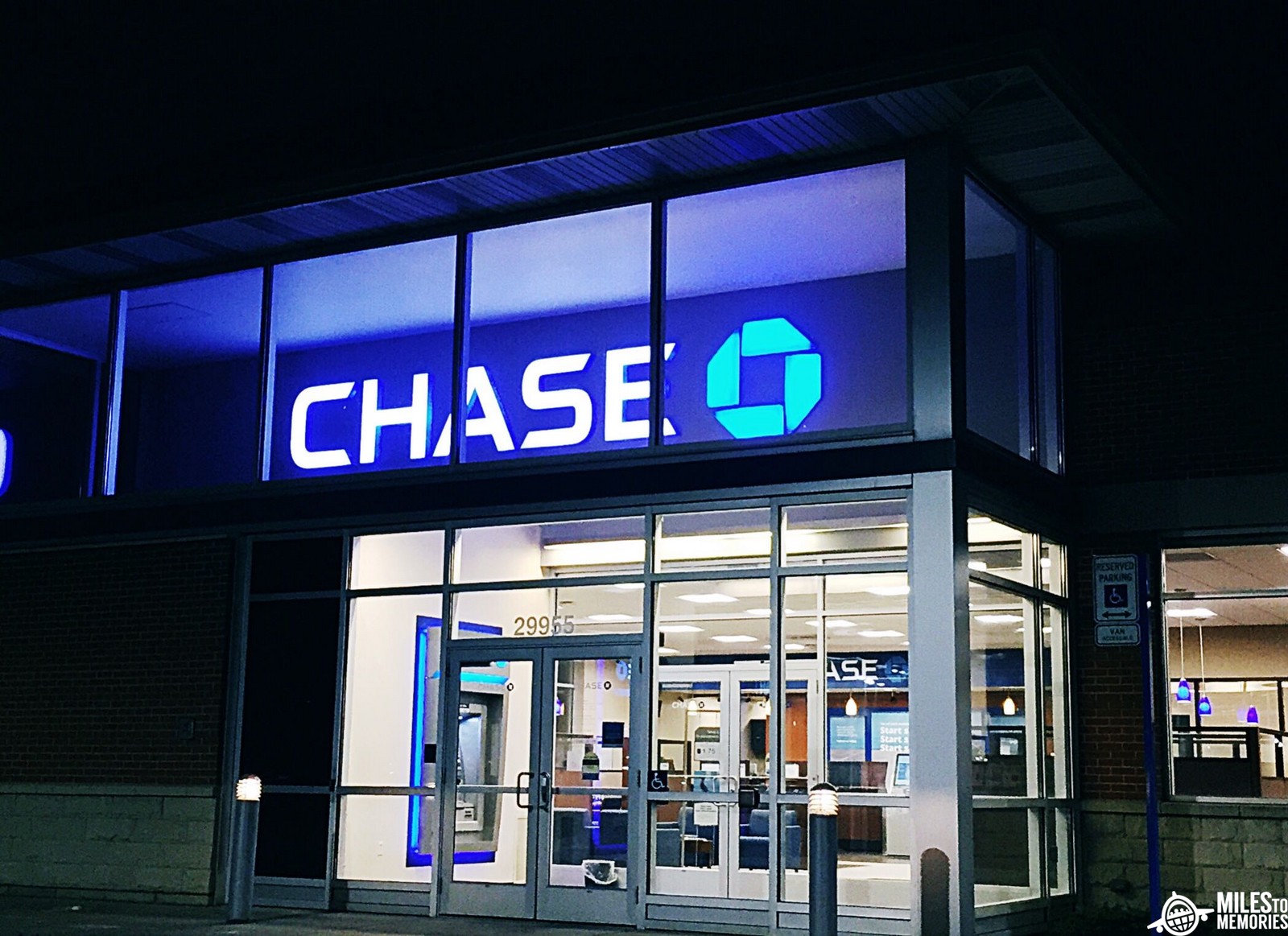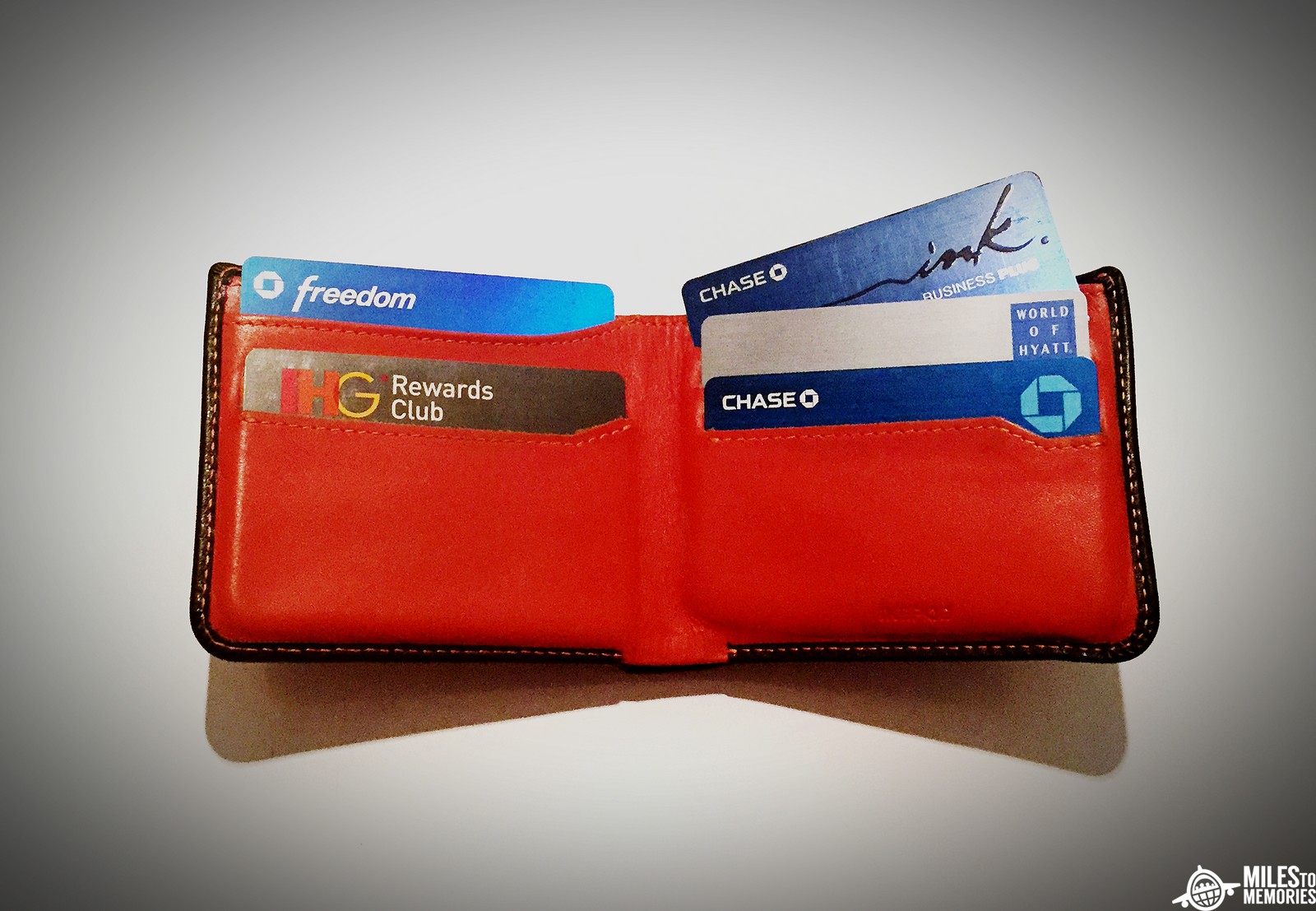
Why The Ink Preferred is the Best Chase Credit Card
The recent announcement of upcoming changes to the Chase Sapphire Reserve have really made me rethink my Chase card plans. I’d hoped to pick up a new Chase Sapphire Preferred this year. While I’ll likely still do that, I’d planned to upgrade to the Chase Sapphire Reserve after the first year, as I’ve long considered it the best Chase credit card.
This exact upgrade strategy is what Mark suggests offers the best value. However, the $100 fee increase with little tangible benefit leaves me wondering if the CSR is worth it at all, let alone the best Chase credit card. With another keeper premium card in my wallet (most certainly not the American Express Platinum), I don’t see much point in paying $250 for the perks it offers.
Which leaves me with a completely different card as the best for earning Chase Ultimate Rewards: the Chase Ink Business Preferred.
Chase Ink Business Preferred: Filling the CSR’s Shoes
I now see the Chase Ink Business Preferred as the best Chase credit card among those that earn Ultimate Rewards points. It offers some of the same earning and perks as the Chase Sapphire Reserve, but without the premium card fee. The Chase Sapphire Reserve now asks $550 per year, which is substantially more than the $95 annual fee for the Chase Ink Business Preferred.
Some of the similarities between the cards include:
- 3x earning on travel
- Ability to transfer Ultimate Rewards to travel partners
- No foreign transaction fees
- Travel protections, such as trip delay coverage and auto collision damage waiver.
These are the main features that the Chase Sapphire Reserve has that I really appreciate. The 3x earning on travel is great, and I know I’m covered if something goes wrong during my trip. The trip cancellation coverage isn’t quite as good as the CSR, but $5,000 in pre-paid expenses is more than enough for me. Trip delay coverage that kicks in after 12 hours of $500 per day is plenty as well. Likewise, you’re still covered by travel accident and baggage insurance.

Where The Ink Preferred Falls Short
Sure, there are some differences between the products. The Ink Preferred lacks the $300 travel credit and Priority Pass membership, and it does not offer a bonus for restaurant spend (but there are other great cards for that).
You also lose 0.25 cent per point when booking travel through the Chase portal. This is the biggest loss of not having a Chase Sapphire Reserve. But unless you’re redeeming tens out thousands of points per year this way, the value is still in favor of the Chase Ink Business Preferred.
Finally, the car rental coverage is not as good, as you’re not covered for personal rentals. For the primary collision damage coverage to kick in, you must be renting for business purposes. If this is the majority of your rentals, then you’re still golden, and the coverage is similar. Here is a list of all of the cards that offer primary car rental insurance.
The Chase Ink Business Preferred also offers $600 in cell phone protection coverage that kicks in when you pay your bill with your Chase Ink Preferred card. This is a substantial benefit for a business phone plan, as it covers employee phones as well. This is a benefit not shared by the CSR.
Why I Argue The Chase Ink Business Preferred is Best
With the $100 increase to the Chase Sapphire Reserve‘s fee, I have to justify a cost of $250 per year. Some people don’t treat the $300 like cash, but I will, since we definitely spend more than $300 per year in travel. But I’m still looking for benefits worth well in excess of $250 if I keep the CSR.
I have a Priority Pass membership through another card, the Amex Aspire, so the CSR’s would be redundant. The new Lyft and DoorDash benefits are useless to me. At this point, I don’t see what I’m getting for that $250 aside from 0.25 cent more per Ultimate Rewards point through the travel portal.
In my case, the Chase Ink Business Preferred covers the rest of the bases. I’ll earn 3x points on travel (but not dining) and can transfer my points to great partners like United, Hyatt, and Virgin Atlantic. And I can pay just $95 for the Ink Preferred rather than $550 for the CSR (and not have to deal with the travel credit).

But It’s a Business Card
I get it. If you don’t have a business, the Chase Ink Business Preferred is inaccessible to you. Not to mention that the car rental protection doesn’t cover personal travel. There are some holes. However, if you have even a small side gig that earns you an income, you can likely qualify for a business credit card.
I’d also understand your hesitancy to use this as a travel card if you’re able to max out your Ink spend on other bonus categories (such as online advertising) during the year through your business. There is an annual cap of $150,000 in spend at 3x. If you’re in this boat, a CSR for the 3x points on travel might be compelling.
Here is a list of all of the 3X earning options:
- Travel
- Shipping purchases
- Internet, cable and phone services
- Advertising purchases with social media sites and search engines
What Do You Think…Is the Ink Preferred the Best Chase Credit Card?
I’m hoping to pick up both a Chase Ink Business Preferred and a Chase Sapphire Preferred this year, as I’ve finally dropped south of 5/24 and am eligible for Chase cards once more. One thing is for certain, though, I won’t be upgrading a card to the Chase Sapphire Reserve anytime soon.
The Ink Preferred is the new best Chase credit card in my mind, and I plan to make it my primary “keeper” with my two Chase Freedom cards and Chase Freedom Unlimited card feeding it points.
The other option is of course the Chase Ink Cash but I can not slide it into the top spot because it needs a premium card to unlock transfers.



Ian, A little off topic but looking at all my options if I downgrade my CSR to a Freedom. Do you know if using Ink BP to pay for a VRBO (Vacation Rental by Owner) via PayPal will code for 5X?
I think the PayPal coding died with the Ink BP/Cash. If the Freedom comes back with 5% on PayPal again, then that should trigger just fine.
I wrote this on the FB post but I’ll just post again here — I don’t know why everyone is discounting the DoorDash benefit. At least in the first year, having Dashpass AND a $60 credit means ordering out = cost of going to the restaurant. Who isn’t able to take advantage of $60/year of delivery unless you live in a rural area with no Doordash?
Then the Lyft benefits in the first year amount to a roughly 35 – 38% discount on all Lyft rides. That is amazing if you ever use ridesharing services at all.
These two things combined easily equal the AF increase and in fact I come out way ahead given my usage patterns. After the first year if these benefits don’t renew or are cut back significantly I will reevaluate. But first year this seems like a good deal.
For my family, also, given MR are mostly useful for business and first class redemptions, since I either travel for work and my work pays for it, or I travel with my wife and child, and we really have to do economy or economy+ so we can sit together in one row (SO much easier that way), I value UR much more than MR for the Hyatt redemptions. So, for me the 3x dining is well worth it — worth about 6% back given how valuable Hyatt points can be.
I think these benefits will vary and some will get a ton of value, but the biggest point we want to make is as a current cardholder you get the $60 Doordash credit this year anyway without paying next years fee. The Lyft benefit is only one year. The Doordash credit is only through 2021. The fee is permanent.
Sure, but that’s why I said “in the first year”. Who knows what the benefits will look like a year later, and I will certainly reevaluate. It seems unlikely they’ll just let all the benefits lapse; if they do, then sure, it’s worth reconsidering. But lots of people are saying they’ll cancel sooner than a year from now — I’m just saying that if you eat out at all and you use ridesharing more than say $150/year, these benefits pay for themselves — but only in the first year. After that gotta reevaluate.
3 points for travel or cell phone are not significant (peanuts & other cards). Travel protection (including delay and car insurance) is the same as on Hyatt or Marriott Business and these cards pay for themselves and are keepers. There is only 1 important benefit left: Transfer to Southwest, United and Hyatt. When trying to figure out if this benefit is worth $95 annually, I’m coming to this conclusion: Pay the fee, transfer all out with the one year of premium UR access, downgrade and keep focusing at MR. The pay & transfer out strategy makes most sense for higher balances. I.e if I have 100k UR than instead of cashing out I pay $95 and can therefore walk out with value approximattly $1400 instead of flat $1000. Small numbers here are not worth the time spent.
True if you don’t care about the ongoing transfer need. For me, earning 5x on Freedom cards that I can transfer to Hyatt points that I get 2cpp in usage quickly eclipses $95 per year in value.
CDW also covers for personal travels if it is international. Only on domestic rentals it has to be business related.
CSR is still the best card, along with the Ink Plus/Cash of course for the 5x for office supply gift cards. Ink Preferred is a solid card, but a very distant third behind those cards. I think any discussion of the merits of the CSR resolves around one issue, and how one issue only, how much one uses the 50% bonus for UR redemptions through the Chase travel portal. If one uses this benefit a lot, the CSR is indispensable, but if this benefit is seldom used, then the CSR is superfluous. One other consideration: the Priority Pass membership through CSR is far superior to the Priority Pass membership through the Aspire (or any AmEX), because it can be used for participating PP restaurants.
The final statement assumes you are able to use PP restaurants frequently. For us, a standard Priority Pass membership is sufficient. Honestly, the Amex Platinum with Escape and Centurion access would be better, but that is *another* $550 I cannot justify.
The real value definitely lies in the 1.5 cent per UR redemption. If Chase ever decides to reduce this, even to 1.33 cents or similar, this would really kill the value over CSP/CIBP.
Rental insurance does cover for personal travel internationally.
Are you sure? The Ink Preferred is one card where I cannot find the benefit terms online, but I thought they mimicked the Ink Plus: https://www.chase.com/card-benefits/inkplus/travel
“It is primary coverage, which means you do not have to file a claim with any other source of insurance while renting for business purposes or when renting for personal reasons outside your country of residence.”
Once you click on ‘Learn More’ of the Auto Rental CDW it also says it for the Ink Plus (as well as the Ink Preferred):
“Provides reimbursement for damage due to collision or theft for most rental vehicles when traveling within the U.S. and abroad.
It is primary coverage, which means you do not have to file a claim with any other source of insurance while renting for business purposes or when renting for personal reasons outside your country of residence. Coverage is secondary and supplements any valid and collectible insurance when renting for personal reasons inside your country of residence”
So I am still confused by all this. I read your first post and was happy to see it, and now it is still being debated. Is it final that it is primary when used internationally? :~)
How would they know what the purpose of your rental is?
Good question. I’m not sure they could prove it, or if you’d have to. I do get asked by Enterprise (in person) and Hertz (online booking) whether the rental is for business or personal purposes.
I used the CDW with CIBP last fall. I actually was using the car for a business trip. But they would only cover it for that as primary. I had to send them documentation of the business and a letter from the business stating I was authorized to rent it and what not as well as a few other things. It was a pain but ultimately they paid the almost 2000$ claim.
I need my CSR for best portal discounts at a decent volume, but I would otherwise use my Green card for 3x MR dining & the CIB for 3x UR travel/assoc protections.
I’m assuming by portal discounts you mean bookings at 1.5 cents per UR? If this is the primary way you redeem, I definitely see the appeal of the CSR.
What would be the break even (1.5 cents) redemption to justify the CSR’s $250? Not sure if my math is correct: is it 100,000 UR ($250 / 0.0025)? 0.0025 is the difference between CSR’s 1.5 cents and CSP/CIP 1.25 cents.
For the first year, correct, since the AF is waived for the CSP. After that, the breakeven point is lower (assuming you’d either pay $95 for CSP/CIP instead of $550 for the CSR). The difference is now $155 (assuming you value the travel credit at a full $300), so you break even at 62,000 UR redeemed.
Except as I argued above in the first year the DoorDash credit is worth at least $60, since DoorPass makes the cost of using DoorDash pretty much zero. Unless you never eat out at all, that makes the effective AF $40 even if you don’t use any of the Lyft benefits.
After the first year if they discontinue DoorPass it changes the game a bit and you’d have to use Lyft a fair amount to make up for the AF. Personally I do use timeshare a lot, but it’s a bit more tricky if they drop DoorPass.